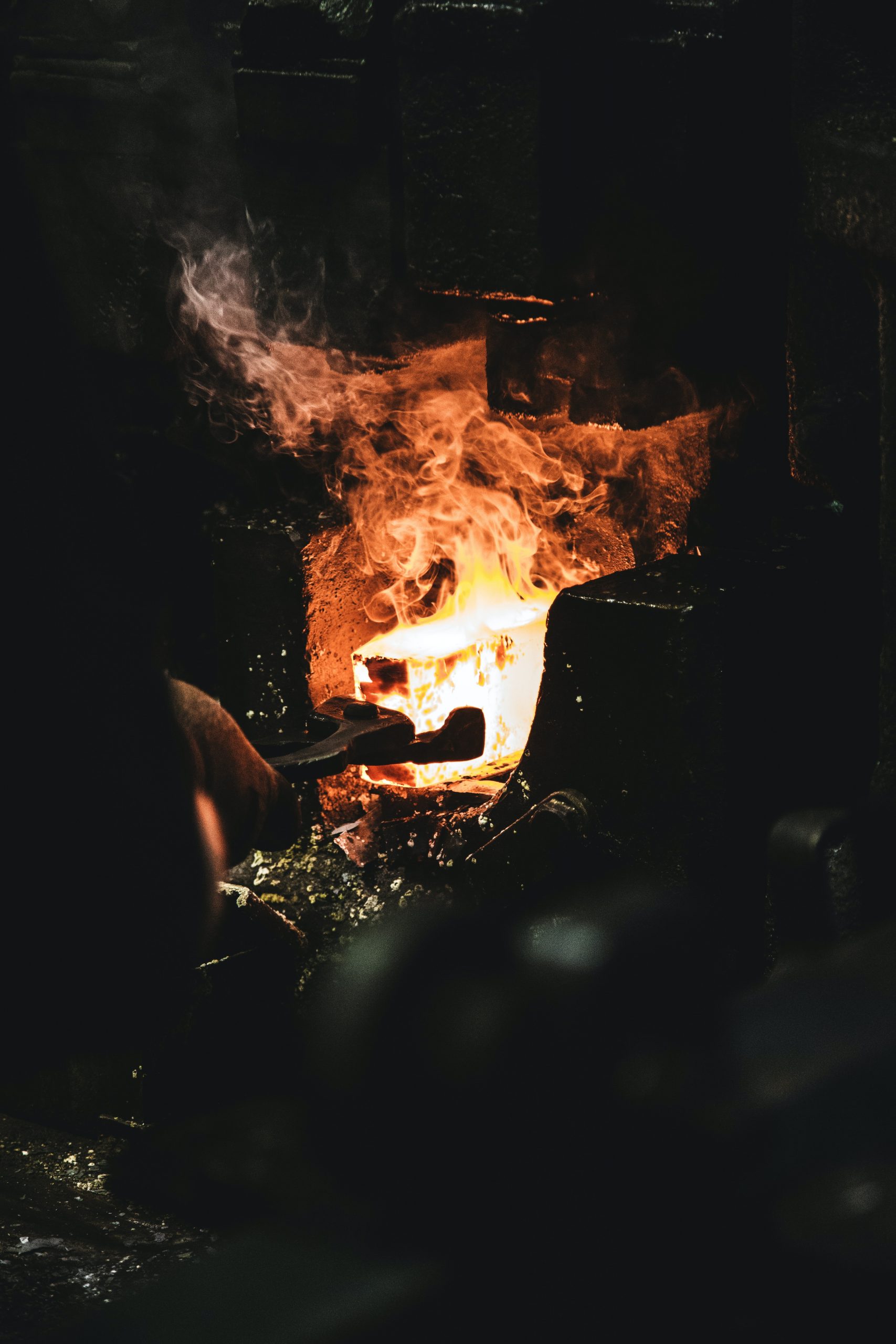The Forge
A forge may be a sort of hearth used for heating metals, or the workplace where such a fire is found . The forge is employed by the smith to heat a bit of metal to a temperature where it becomes easier to shape by forging, or to the purpose where work hardening does not occur.
Forge typically uses soft coal, industrial coke, or charcoal because of the fuel to heat metal. The designs of those forges are changed with time, but the fuel is coal or charcoal; the essential design has remained an equivalent.
Forging tools are used for !
Types of forging tool use anvil, chisel, die, flatter, punch and drift, swage, block, clamping vice, and hearth tong, fuller, hammer, press,
There are many different kinds of forging processes available; however, they’re going to be grouped into three main classes: Drawn out: length increases, cross-section decreases. Upset: length decreases, cross-section increases. Squeezed in closed compression dies: produces a multi directional flow.
Forge of this sort is actually a fireplace or fireplace designed to permit a fire to be controlled such metal introduced to the hearth could also be delivered to a malleable state or to cause other metallurgical effects (hardening, annealing, and tempering as examples). The forge fire is controlled in three ways, the amount of air, the quantity of fuel, and the shape of the fire.
A forge fire for the decent working of metal
Over thousands of years of forging, these devices have evolved in one form or another due to the essential features of this type of forge.
Gruyere—a pipe through which air is often forced into the hearth.
Hearth—a place where the burning fuel is often contained over or against the Gruyere opening. Traditionally hearths are constructed of mud-brick (adobe), fired brick, stone, or later, constructed of iron.
During operation, fuel is placed in or on the fireside and ignited. A source of moving air, like a lover. With additional air, the hearth consumes fuel faster and burns hotter (and cleaner – smoke is often thought of as escaped potential fuel.


Forging types
-
Coal/coke/charcoal forge.
-
Gas forge.
-
Finery forge.
-
Anvil.
-
Hammer.
-
Chisel.
-
Fuller

